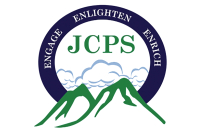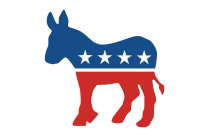Ellison came to WNC as a ‘Kephart pilgrim’
While George and Elizabeth Ellison are fixtures in Bryson City today — Elizabeth as a renowned artist and George as a writer and naturalist — their journey to the region 30 years ago was little more than happenstance.
The Ellisons rode in on the back-to-the-land movement, setting up house and raising a family in a rural cabin lacking running water or electricity. While it was ultimately a lifestyle that fit them perfectly, they landed here initially while on a quest of a different sort.
George Ellison first set foot in Bryson City in 1976, partly on a writing assignment and partly on a personal pilgrimage to the old stomping grounds of Horace Kephart, a famed writer who immersed himself in the culture of backwoods mountaineers a century ago. Kephart’s writing chronicled the distinct mountain culture and dialect and described the wilderness landscape — a rich subject matter than catapulted him onto the national stage as an outdoors adventure writer.
Ellison was commissioned to research the life of Kephart and write an introduction for a reprint of Kephart’s Our Southern Highlanders. While Ellison had long been enamored with Kephart’s writing, he landed the assignment somewhat by luck. Ellison was teaching at Mississippi State University in the mid-19070s when small talk at an English Association meeting arrived on the subject of Kephart.
A visiting scholar from the University of Tennessee Press was in the room, and like Ellison, was a Kephart follower. A reissue of Our Southern Highlanders had been percolating in the background, but hinged on finding someone to write an introduction that would set the stage for the new printing.
“We got to talking and he said, ‘Gosh, I found someone with an interest in Kephart. Can you do the introduction?’” Ellison recalled.
Related Items
Ellison gladly, but skeptically, accepted. Kephart’s life had largely been an enigma. Little was known about the man before he abruptly appeared in Swain County and settled amongst the people there. Kephart had left few clues of his own.
“I thought it would be a situation where I couldn’t find enough to write an introduction. All I’d found before was a couple book reviews and a little sketch of his life,” Ellison said. “No one had done a coherent depiction of his life before he came here.”
Kephart was a major player in the movement to create the Great Smoky Mountains National Park, so one of Ellison’s first moves was to seek out the park’s historian and archivist, Don DeFoe.
“I walked in and said ‘Does anyone here know anything about Horace Kephart?’ and his eyes lit up. It was like he’d been waiting for me for years,” Ellison said.
DeFoe led Ellison downstairs to the basement of park headquarters outside Gatlinburg, Tenn., and opened the door of a damp storage room.
“There were boxes of Kephart stuff molding away, all this stuff was sitting there rotting away,” Ellison said of the room, which had visible water leaks.
Along with boxes of Kephart’s prized journals, containing meticulous notes on everything from local dialect to plant uses, were many of Kephart’s personal items.
Ellison’s quest to piece together Kephart’s life soon led him to a host of closet Kephart fans, each eager to share what they could.
“I felt like a little Dutch boy running around sticking my finger in the dike,” Ellison said. “It was overwhelming, because I had a project where I didn’t know what I was going to write about and suddenly I had more than enough.”
Ellison’s research ultimately revealed the life and times of Kephart and postulates on the motives that precipitated his move to live among the mountaineers.
“No one knew his story until I put it together, not in that kind of detail and context,” Ellison said.
Ellison’s own writing career was launched on the coattails of Kephart. The introduction earned him instant recognition and esteem with exactly the audience that Ellison was suited for, an audience as enthralled with the mountain landscape and cultural history as Ellison was.
In recent years, Kephart has been transformed from a nearly forgotten historical figure to a folk hero of sorts.
Ellison helped facilitate a transfer of the national park’s Kephart materials to Western Carolina University, which provided a proper archival repository for the valuable historical collection both in the Hunter Library Special Collections and Mountain Heritage Center.
Ellison spent a lot of time in Bryson City researching Kephart, enough to realize the town could give him and his wife, Elizabeth, the lifestyle they were looking for.
“She wanted to paint full time and not be pigeon-holed as a professor’s wife. I always wanted to be a writer,” Ellison said. “I said ‘Bryson City is really a nice little town. Let’s give it a shot.’”
Ellison denies that he set out to be a modern-day Kephart.
“I didn’t come here because I fell in love with Kephart. I came here because I fell in love with the region,” Ellison said.









